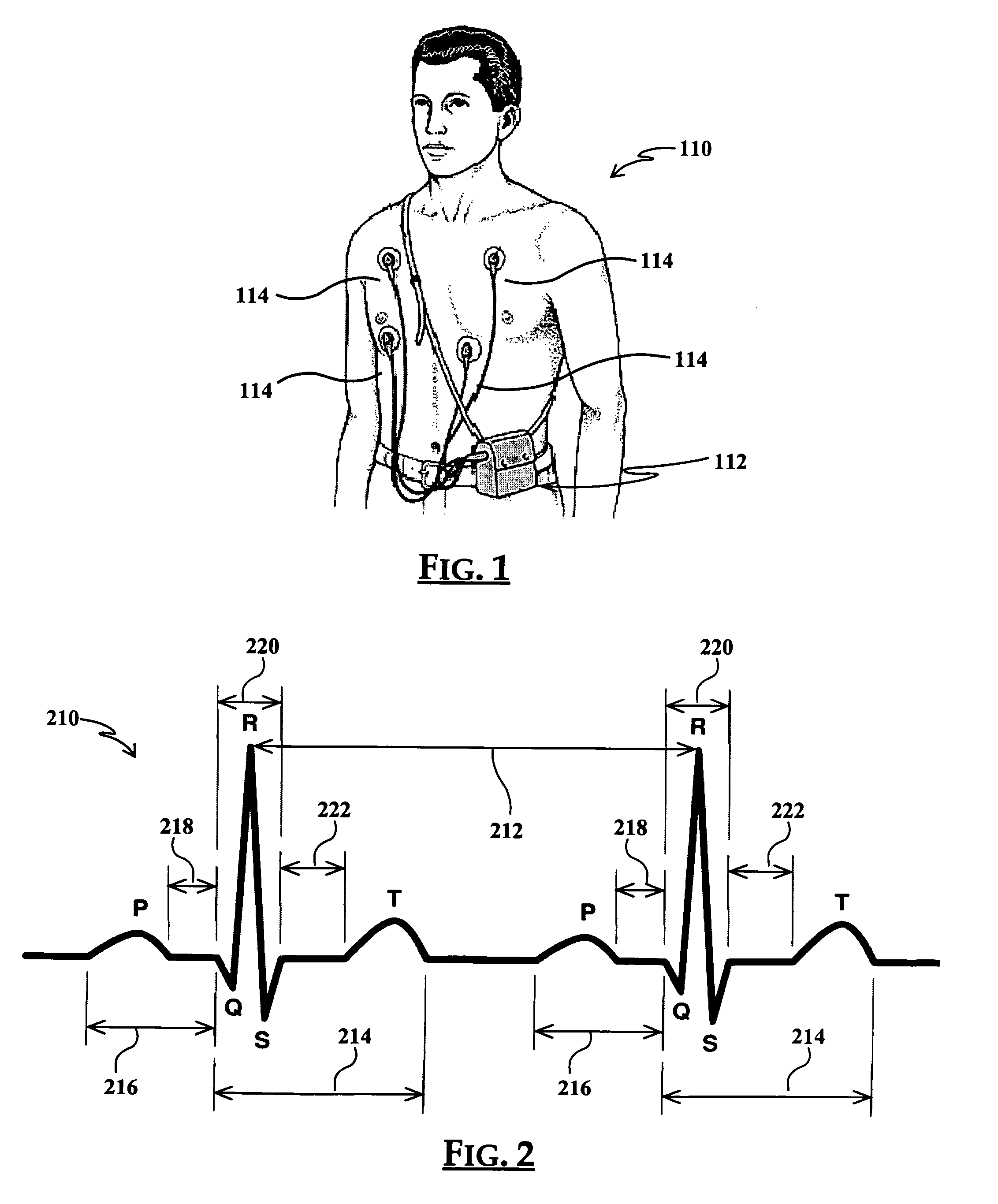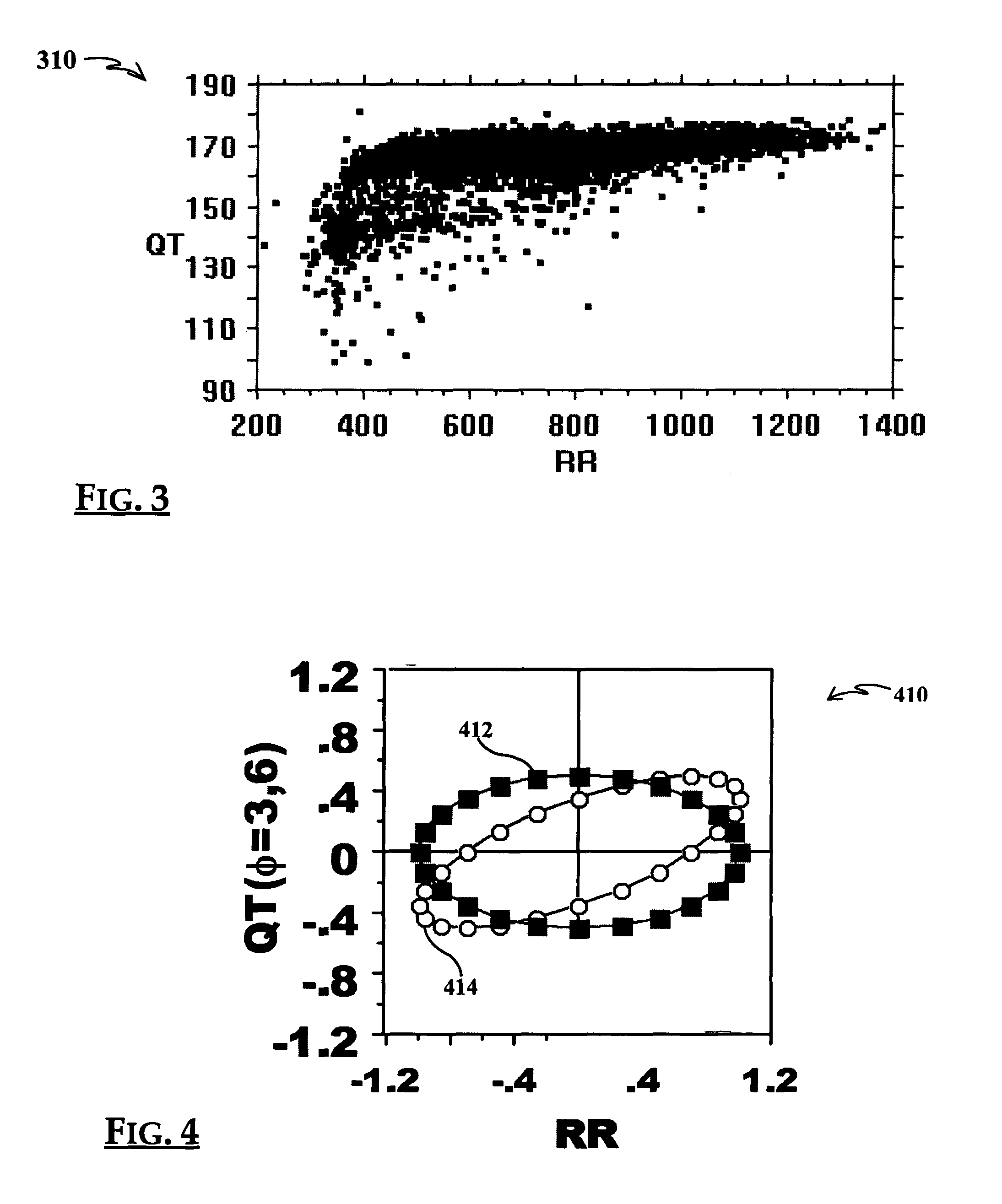Cardiac function circadian variation analysis system and method
a technology of circadian variation and analysis system, which is applied in the field of identifying circadian rhythm related variations of human medical attributes, can solve the problems of not being able to meet people's standard diagnosis protocol, and achieve the effect of improving the cost-effective deployment of medical resources and better targeting
- Summary
- Abstract
- Description
- Claims
- Application Information
AI Technical Summary
Benefits of technology
Problems solved by technology
Method used
Image
Examples
Embodiment Construction
[0023]In the following description, identical numbers indicate identical elements. Where an element has been described in one Figure, and is unaltered in detail or relation in any other Figure, said element description applies to all Figures.
[0024]A detailed explication of a general procedure common to many of the approaches employed by various embodiments of the present invention will generally involve establishing stratification of at least one risk of a cardiac adversity by:[0025]a) Accessing at least one 24 hour (generally) period of a patient's electrocardiograph recordings;[0026]b) Ascertaining both an RR and a QT acrophase (time of peak value≡−φR and −φQ, respectively) from that patient's 24 hour electrocardiograph record utilizing regression analysis;[0027]c) Determining a phase difference φ equal to the difference between the RR and QT acrophases;[0028]d) Discerning 24 hour records of the QT and RR values from the patient's electrocardiograph recordings;[0029]e) (Optionally...
PUM
 Login to View More
Login to View More Abstract
Description
Claims
Application Information
 Login to View More
Login to View More - R&D
- Intellectual Property
- Life Sciences
- Materials
- Tech Scout
- Unparalleled Data Quality
- Higher Quality Content
- 60% Fewer Hallucinations
Browse by: Latest US Patents, China's latest patents, Technical Efficacy Thesaurus, Application Domain, Technology Topic, Popular Technical Reports.
© 2025 PatSnap. All rights reserved.Legal|Privacy policy|Modern Slavery Act Transparency Statement|Sitemap|About US| Contact US: help@patsnap.com



